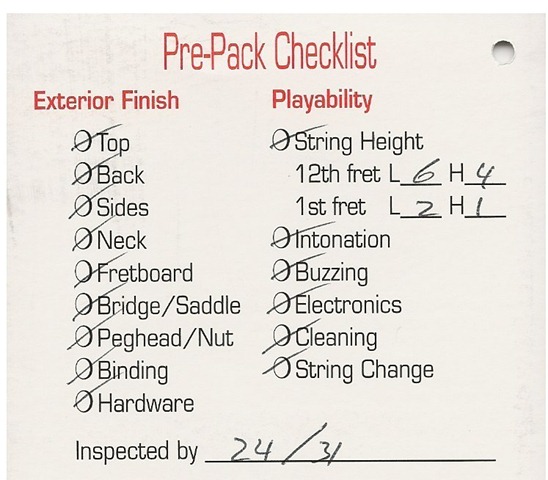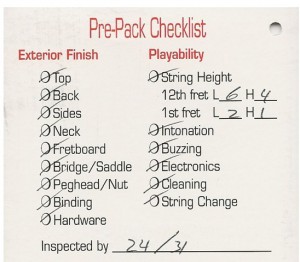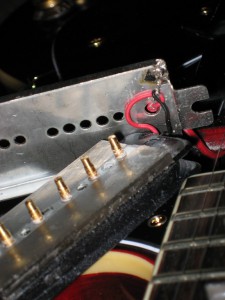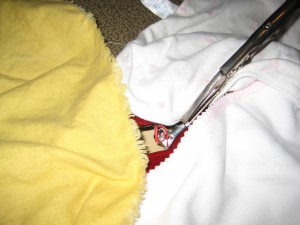Learning to learn how to play guitar
Oh, how it pains me to say this: I’ve been playing guitar for over 20 years. But I can’t call myself a guitarist.
I have a pretty solid background in music theory and harmony. I minored in music at UC Berkeley. I can find my way around a piano. Yet somehow, I never learned how to learn how to play guitar! I never once took a lesson.
For the first five years or so, I learned just enough to be able to play the songs I was writing, and I even played and sang in a band. I never learned more than the open chords, the E-form bar chord, and the note names on the first string. Mostly I wrote songs by noodling on the guitar until something sounded good. It was “art”.
For the next decade or so, I didn’t really learn much more. More

Pots and caps
I’
Here’s some background reading for the upcoming capacitor and potentiometer mods.
Auditioning Tone Capacitors Part 1 (Premier Guitar)
Auditioning Tone Capacitors Part 2 (Premier Guitar)
Article about pots in general, with good charts about tapers
Treble Bleed Mod for Volume Pots
Resistor-Filter Cutoff Calculator
And here’s some shopping resources:
CTS Pots at Guitar Parts Resource
Sprague Drop caps at Guitar Parts Resource
Pickup experiment- bypassing electronics
Speaking with Pete Biltoft at Vintage Vibe Guitars about possible dog-eared P-90 pickup replacements for the Riviera P93, Pete recommended I first try bypassing the guitar’s electronics to see if they’re sucking the tone away. This experiment requires disconnecting the pickup wire from the electronics, and routing it directly to the output jack. The results are interesting. Read on for pictures, and audio, video before/after.

Rather than fishing out the output jack through the f-hole, I used alligator clips to attach an extra jack hanging off the side of the guitar. The green alligator connects the jack ground to the pickup ground. The red alligator connects to the red signal wire of the pickup. With this setup, I can easily swap the red alligator between the new output jack and right back to the neck volume pot.
Audio Examples
| Through Electronics | Bypassing Electronics |
|---|---|
| Pattern 1 | Pattern 1 |
| Pattern 2 | Pattern 2 |
| Pattern 3 | Pattern 3 |
So, it’s time to find and order some pots and caps! I’ll do a post on installation, and the followup for sound comparison.

A Luthier’s Setup
The factory setup of my Epiphone Riviera P93 was horrible! I had a luthier to do a full setup on the guitar, and it’s much better now. Read on for all the measurements before/after the setup.

- Intonation? Sucks, check!
- String height? Crazy high, check!
- Buzzing? Yep, check!
- Fretboard cleaning? Yuck, check!
Video Review of the Epiphone Riviera P93
Just uploaded my first YouTube video ever 🙂 It’s a quick overview of the Riviera P93, along with some demos of the three P-90 pickups individually, and my thoughts on possible mods/improvements.
I’ve got some more videos and audio examples, coming soon, so stay tuned…



